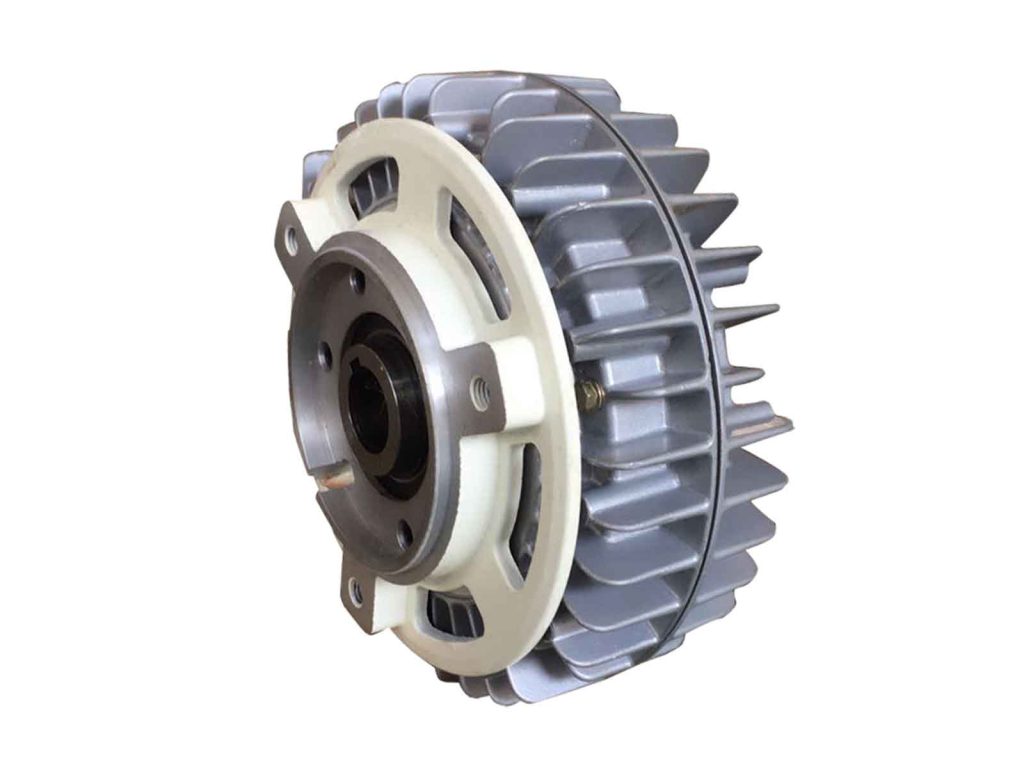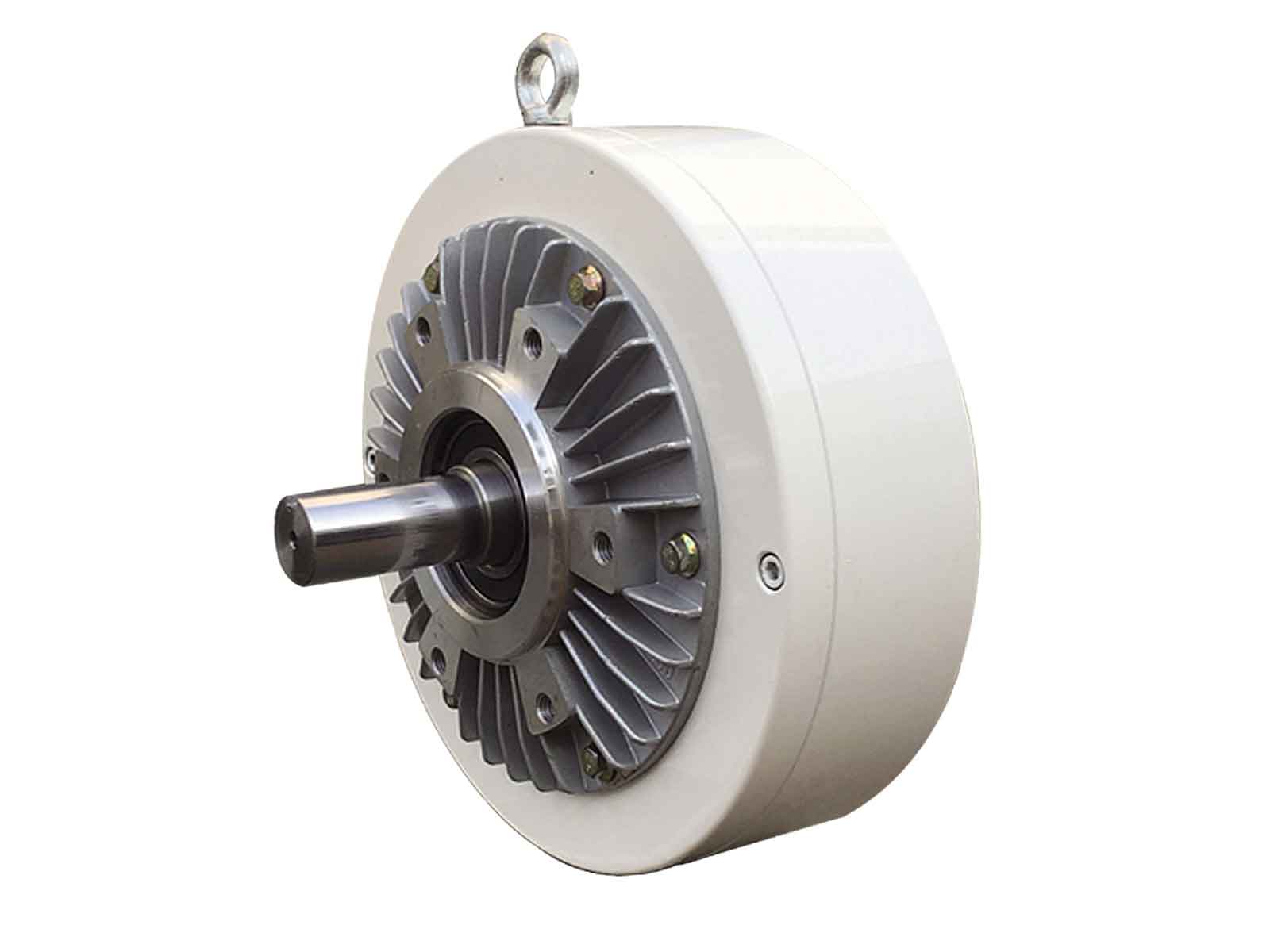Magnetic particle clutches are versatile devices used in various industrial applications for transmitting torque and controlling rotational motion.
Features of Hollow Shaft Magnetic particle Clutch
- Hollow Center: The defining feature of a hollow shaft magnetic particle clutch is its central opening, which allows for the passage of other elements such as wires, optical fibers, or shafts.
- Space-Saving Design: These clutches are space-efficient since they can be integrated directly into a shaft assembly, eliminating the need for additional components.
- Tension Control: Hollow shaft clutches are often used in wire winding and unwinding applications, where precise tension control is vital for quality outcomes.
Features of Solid Shaft Magnetic particle Clutch
- High Torque Transmission: Solid shaft magnetic particle clutches are known for their ability to transmit high levels of torque, making them suitable for heavy-duty applications.
- Robust Construction: They are built with sturdy materials to withstand the rigors of industrial use, ensuring durability and reliability.
- Common in Heavy Machinery: Solid shaft clutches are commonly found in heavy machinery, such as metalworking equipment and industrial presses.
Hollow Shaft Magnetic Particle Clutch vs. Solid Shaft Magnetic Particle Clutch: Key Differences Between the Two Types
Hollow shaft and solid shaft magnetic particle clutches share the same working principle, but they differ in structure, installation flexibility, torque transmission, and application suitability. Understanding these differences helps engineers select the right clutch for their mechanical system.
Structural Design
Hollow Shaft Clutch:Features a central hollow bore that allows a driven shaft to pass through. This design enables direct mounting and simplifies machine layouts.
Solid Shaft Clutch:Uses a fully solid output shaft, providing a more traditional and rigid design for standard torque transmission setups.
Installation Flexibility
Hollow Shaft:Offers easier installation because it can mount directly onto the user’s shaft without extra couplings. This reduces assembly time and alignment challenges.
Solid Shaft:Requires couplings or additional connectors, making installation more complex but also more adaptable to custom configurations.
Torque Capacity and Strength
Hollow Shaft:Typically supports lower–to–medium torque ranges due to reduced material volume in the core.
Solid Shaft:Delivers higher torque capacity and enhanced mechanical strength, ideal for heavy-duty loads.
Space and System Integration
Hollow Shaft:Saves space, reduces parts, and fits compact systems where axial length is limited.
Solid Shaft:Takes more installation space but provides stronger rigidity and better stability for high-precision operations.
Application Scenarios
Hollow Shaft:Common in packaging machinery, textile equipment, light-duty winding systems, and automation lines where compact design and fast installation are key.
Solid Shaft:Ideal for metallurgy, heavy winding systems, industrial conveyors, and other machinery requiring high torque and high durability.

differences between Two types of magnetic particle clutches
| Feature | Hollow Shaft Magnetic particle Clutch | Solid Shaft Magnetic particleClutch |
| Shaft Type | Hollow | Solid |
| Independent Control | No | No |
| Hollow Center | Yes | No |
| Torque Transmission Capacity | Moderate | High |
| Space Efficiency | High | Low |
| Typical Applications | Wire winding, Textile | Metalworking, Conveyors |
Conclusion
Understanding the classification of magnetic particle clutches based on shaft type is essential for selecting the right clutch for specific industrial applications. hollow shaft clutches feature a hollow center for various applications, and solid shaft clutches excel in heavy-duty scenarios.
Each type has its unique features and advantages, making them valuable components in a wide range of industries. Whether you need precise tension control, space-efficient design, or high torque transmission, there is a magnetic particle clutch suitable for your needs.
